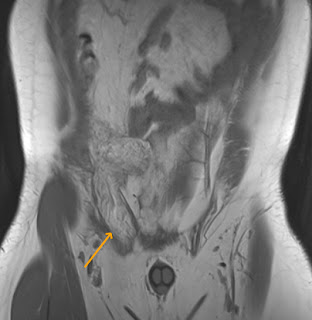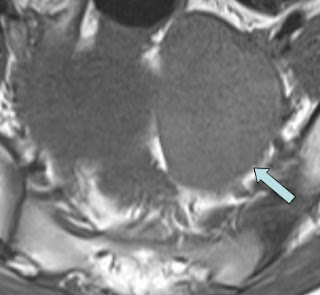Testicular pain in a young male
24 years young male complains of severe pain in right testis since two days.
USG shows hypoechoic lesion near lower pole. MRI was done.

what do you think is the diagnosis..?
Let us see the findings first.
arrow points to a triangular hypointensity.
arrows point to a triangular hypointensity.
an area of facilitated diffusion seen in lower pole of right testis.
T1 contrast and in particular subtraction image shows area of lack of enhancement surrounded by well enhancing rim.
These findings with history of pain are consistent with segmental testicular infarct.
what are radiological findings of segmental testicular infarction.
It is characterised by presence of a triangular shaped avascular intrataesticular lesion on sonography or MRI and enhancement of surrounding borders on MRI.
how do you differentiate it from testicular tumor.
triangular shape , lack of vascularity , clinical setting of severe pain are differenital features of segmental infarct. follow up should be advised.
what is the follow up in this patient.
this patient is under observation and is getting better.
reference
Gabriel Fernandez et al. radiologic findings of segmental testicular infarction.AJR May 2005







































